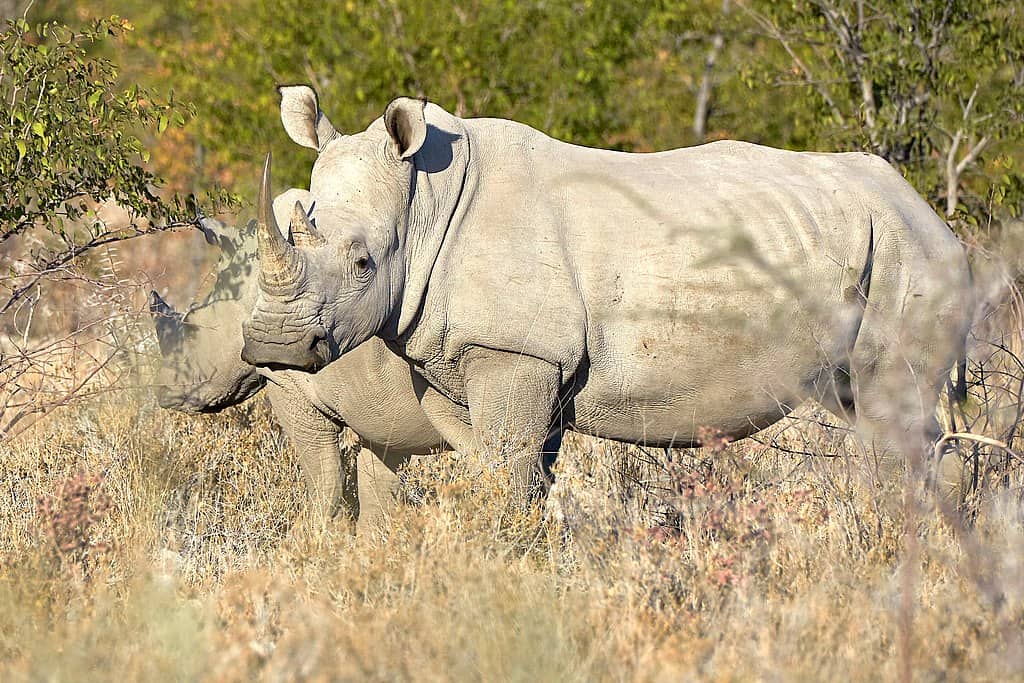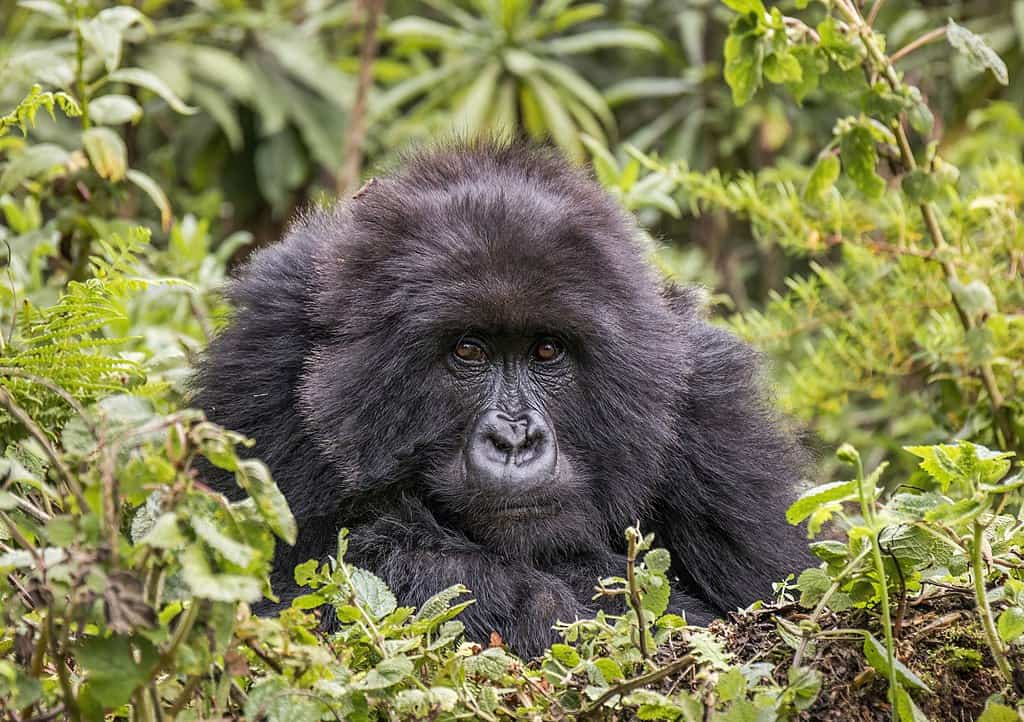In an era dominated by news of species decline and extinction, there are remarkable stories of resilience and recovery that deserve our attention. Conservation efforts around the globe have helped numerous species bounce back from the brink of extinction, demonstrating nature’s remarkable resilience when given adequate protection and support. These conservation success stories not only provide hope in challenging times but also offer valuable lessons about effective wildlife management strategies. From the depths of the ocean to the highest mountains, here are fifteen wild species that are making impressive comebacks against considerable odds.
15. American Bison The Return of an American Icon

Once numbering in the tens of millions across North America, American bison were decimated to fewer than 1,000 individuals by the late 1800s due to commercial hunting and deliberate extermination policies. Today, thanks to concerted conservation efforts, approximately 500,000 bison exist in North America. The most significant recovery occurred in Yellowstone National Park, where the population has grown from just 25 animals in 1902 to over 5,000 today. Conservation organizations, Native American tribes, and government agencies have collaborated to restore these magnificent animals to portions of their historic range. The American Bison Society, founded in 1905, played a crucial role in preventing the species’ extinction, and in 2016, the American bison was designated as the national mammal of the United States, symbolizing its cultural and ecological significance to the nation.
14. Southern White Rhinoceros A Conservation Marvel

The southern white rhinoceros represents one of the most remarkable conservation success stories. In the late 19th century, this magnificent species was thought to be extinct until a small population of fewer than 50 individuals was discovered in South Africa in 1895. Through rigorous protection and careful management, their numbers have increased to approximately 18,000 individuals today, making them the most abundant rhino subspecies. Conservation strategies included establishing protected areas, implementing anti-poaching measures, and developing innovative breeding programs. Countries like South Africa, Namibia, Kenya, and Zimbabwe have been instrumental in this recovery. However, the fight isn’t over—poaching for rhino horn continues to pose a significant threat, requiring ongoing vigilance and international cooperation to ensure the southern white rhinoceros continues its remarkable comeback.
13. Giant Panda China’s Conservation Triumph

The giant panda, arguably the world’s most recognizable conservation symbol, has made significant strides toward recovery. In 2016, the International Union for Conservation of Nature (IUCN) downgraded the giant panda from “endangered” to “vulnerable,” reflecting decades of protective measures by the Chinese government. Panda numbers in the wild have increased from around 1,000 in the 1980s to approximately 1,864 today. This recovery stems from China’s creation of a network of panda reserves that now protect nearly 70% of the pandas’ habitat, strict anti-poaching laws, and groundbreaking research in panda breeding and reintroduction techniques. The Giant Panda National Park, established in 2020, connects isolated panda populations and encompasses over 10,000 square miles of bamboo forest. Despite this progress, challenges remain, including habitat fragmentation and the impacts of climate change on bamboo forests, the panda’s primary food source.
12. California Condor Saved Through Captive Breeding

The California condor, North America’s largest flying bird with a wingspan reaching 9.5 feet, exemplifies how intensive human intervention can rescue a species from the edge of extinction. By 1982, only 22 condors remained in the wild, prompting wildlife officials to capture all remaining birds for an emergency captive breeding program. This controversial decision proved successful—today, there are over 500 California condors, with more than half flying free in California, Arizona, Utah, and Baja California, Mexico. The recovery program faced numerous challenges, including lead poisoning from ammunition fragments in scavenged carcasses, which continues to be the leading cause of death for wild condors. Conservation efforts now focus on lead ammunition bans, continued captive breeding, and public education. The condor’s recovery demonstrates that even species reduced to critically low numbers can be saved with sufficient resources and commitment.
11. Sea Otter Ecosystem Engineers Bouncing Back

Sea otters were hunted to near extinction for their luxurious fur during the maritime fur trade of the 18th and 19th centuries, with global numbers plummeting from approximately 300,000 to fewer than 2,000 by 1911. Following protection under the International Fur Seal Treaty, their numbers have rebounded to approximately 125,000 worldwide. Their recovery has been particularly significant along parts of the California coast and Alaska. As “keystone species,” sea otters play a crucial role in maintaining healthy kelp forest ecosystems by controlling sea urchin populations that would otherwise decimate kelp forests. Their return has triggered trophic cascades that have restored biodiversity and ecosystem health in coastal regions. However, recovery has been uneven across their range, with threats including oil spills, fisheries conflicts, and disease continuing to challenge conservation efforts in regions like southern California and parts of Alaska.
10. Gray Wolf Controversial Comeback

Once nearly eliminated from the lower 48 United States by the mid-20th century, gray wolves have made a remarkable recovery following their protection under the Endangered Species Act in 1974. Their resurgence began with natural migration from Canada and was accelerated by the famous reintroduction to Yellowstone National Park in 1995, which has become a textbook example of how apex predators can transform ecosystems. Today, approximately 6,000 wolves inhabit the contiguous United States across several regions, including the Northern Rockies, Western Great Lakes, and Pacific Northwest. Their recovery has restored natural predator-prey dynamics and triggered trophic cascades that have benefited ecosystem health. However, wolf recovery remains one of conservation’s most polarizing issues, with ongoing debates about management authority, hunting seasons, and conflicts with livestock. Despite these challenges, the gray wolf’s comeback demonstrates how a formerly persecuted predator can recover when given legal protection and public support.
9. Humpback Whale Oceanic Recovery

Humpback whales were pushed to the edge of extinction by commercial whaling, with populations reduced by an estimated 90% before the International Whaling Commission banned their hunting in 1966. From a global population that may have numbered fewer than 5,000 individuals, humpbacks have rebounded to approximately 135,000 worldwide today. This remarkable recovery led to most humpback populations being removed from the U.S. Endangered Species List in 2016. The recovery has been particularly pronounced in the North Pacific, where numbers have grown from roughly 1,400 in the 1960s to over 21,000 today. Crucial to this success was the 1982 global moratorium on commercial whaling and the creation of marine protected areas in critical breeding and feeding grounds. Researchers can now identify and track thousands of individual humpbacks through photo identification of their unique tail flukes, allowing for better population monitoring. Although these majestic animals still face threats from vessel strikes, entanglement in fishing gear, and ocean noise pollution, their recovery represents one of the greatest conservation achievements for marine mammals.
8. Bald Eagle America’s National Bird Soars Again

The bald eagle, America’s national symbol, has staged a dramatic comeback from a low of just 417 nesting pairs in the continental United States in 1963. Today, the population exceeds 300,000 individuals, with over 71,400 nesting pairs. This remarkable recovery followed the 1972 ban on DDT, a pesticide that caused egg-shell thinning and widespread reproductive failure. Enhanced by protection under the Endangered Species Act and the Bald and Golden Eagle Protection Act, conservation efforts included habitat preservation, captive breeding programs, and reintroduction projects. The species was officially removed from the endangered species list in 2007, though it remains protected by federal law. Bald eagles now nest in all continental states, with particularly strong populations in Florida, Minnesota, and the Pacific Northwest. Their recovery demonstrates how effective environmental regulations and targeted conservation strategies can reverse the decline of even highly threatened species. The bald eagle’s resurgence has also delivered economic benefits through wildlife tourism and has restored an important cultural symbol to America’s landscapes.
7. Mountain Gorilla Community-Based Conservation Success

Mountain gorillas have increased from a precarious population of just 254 individuals in 1981 to over 1,000 today, marking one of the few successful conservation stories for great apes. This subspecies, which inhabits the mountains of Rwanda, Uganda, and the Democratic Republic of Congo, owes its recovery largely to intensive protection and innovative community-based conservation approaches. The Dian Fossey Gorilla Fund and organizations like the International Gorilla Conservation Programme have trained local rangers who conduct daily monitoring of gorilla families. Gorilla ecotourism has transformed the species from a hunting target to a valuable economic resource, with tourists paying up to $1,500 for a single hour with these magnificent primates. The revenue supports both conservation efforts and local community development, creating direct financial incentives for protection. Health monitoring and veterinary interventions have reduced disease transmission between humans and gorillas. Despite this progress, mountain gorillas remain vulnerable to political instability in the region, habitat loss, and potential disease outbreaks. Their recovery demonstrates how combining rigorous protection with local economic benefits can save critically endangered species.
6. Southern Sea Lion Recovery in the Southern Ocean

Southern sea lions experienced severe population declines throughout the 19th and early 20th centuries due to commercial hunting for their blubber, hides, and genitalia. In Argentina alone, populations crashed from an estimated 275,000 individuals in the 1930s to just 18,000 by the mid-1960s. Following protective legislation and the cessation of commercial hunting, southern sea lion populations have rebounded impressively throughout their range, which includes the coasts of South America and the Falkland Islands. Current estimates place the global population at approximately 425,000 individuals. Their recovery has been particularly notable along the Patagonian coast of Argentina and Chile, where growing colonies have become important tourist attractions. As apex predators, their restoration has helped rebalance marine food webs in the Southern Ocean ecosystem. Ongoing conservation challenges include entanglement in fishing gear, competition with fisheries for prey species, and the impacts of climate change on ocean productivity. This recovery demonstrates the resilience of marine mammal populations when direct exploitation ceases and habitat protection measures are implemented.
5. Arabian Oryx Back from Extinction in the Wild

The Arabian oryx represents the first species to be upgraded from “extinct in the wild” to “vulnerable” on the IUCN Red List, marking an extraordinary conservation achievement. This striking white antelope with long, straight horns was hunted to extinction in the wild by 1972, with the last wild individual killed in Oman. Fortunately, a small number survived in captivity, forming the foundation for an ambitious reintroduction program. Beginning in 1982, oryx bred in zoos were gradually released into protected areas across the Arabian Peninsula. Today, approximately 1,200 Arabian oryx roam wild in Oman, Saudi Arabia, the United Arab Emirates, Jordan, and Israel, with thousands more in captivity and semi-captivity. The recovery required extensive international collaboration between governments, conservation organizations, and zoological institutions. Protected reserves like Oman’s Arabian Oryx Sanctuary and Saudi Arabia’s Mahazat as-Sayd have been crucial to their recovery. The species still faces challenges, including habitat degradation, potential poaching, and limited genetic diversity, but its return to the deserts of the Middle East stands as a powerful example of how species can be brought back from the edge of extinction through coordinated breeding and reintroduction efforts.
4. Przewalski’s Horse The Last Truly Wild Horse

Przewalski’s horse, the only truly wild horse species remaining on Earth, became extinct in the wild by the 1960s due to hunting, habitat loss, and competition with livestock. Its survival hinged entirely on approximately 12 individuals captured for zoos in the early 20th century, which became the foundation for a carefully managed breeding program. After decades of captive breeding, reintroductions began in the 1990s in Mongolia’s Hustai National Park and the Gobi Desert. Today, over 800 Przewalski’s horses roam free in Mongolia, China, and Kazakhstan, with another 2,000 in zoos and reserves worldwide. Their recovery required overcoming numerous challenges, including limited genetic diversity, the need to restore wild instincts in captive-bred animals, and securing adequate protected habitat. In 2008, the IUCN changed the species’ status from “extinct in the wild” to “endangered,” and now to “critically endangered,” acknowledging its tenuous but improving situation. Recent genetic studies have confirmed Przewalski’s horse as truly distinct from domestic horses, reinforcing the importance of preserving this unique evolutionary lineage. Their comeback demonstrates how concerted breeding efforts can rescue species that have disappeared completely from nature.
3. Black-footed Ferret America’s Most Endangered Mammal Rebounds

The black-footed ferret’s recovery represents one of North America’s most dramatic conservation successes. Once thought extinct, the species was rediscovered in 1981 when a ranch dog in Wyoming brought home a dead ferret, leading to the discovery of a small colony of just 24 animals. With their population in crisis, all remaining wild ferrets were captured to establish a captive breeding program. Today, approximately 300-400 black-footed ferrets live in the wild across 30 reintroduction sites in the United States, Canada, and Mexico, with several hundred more in breeding facilities. Their recovery has faced unique challenges, including their dependence on prairie dog colonies for both food and shelter, and the susceptibility of both species to sylvatic plague. Conservation efforts have included plague management, prairie dog habitat protection, and innovative breeding techniques. In 2020, scientists created Elizabeth Ann, the first cloned black-footed ferret, from 30-year-old preserved genetic material, potentially introducing crucial genetic diversity to the species. Despite remaining endangered, the black-footed ferret’s journey from presumed extinction to recovery demonstrates the value of intensive species management and the importance of preserving even seemingly lost causes.
2. Iberian Lynx Europe’s Most Endangered Cat

The Iberian lynx, a stunning spotted feline native to the Iberian Peninsula, has pulled back from the verge of extinction through one of Europe’s most ambitious conservation programs. In 2002, fewer than 100 lynx remained in the wild, confined to two isolated areas in southern Spain. Today, thanks to extensive conservation efforts, the population has increased to over 1,100 individuals across Spain and Portugal. This remarkable recovery resulted from a comprehensive approach that included captive breeding and reintroduction programs, habitat restoration, prey recovery (primarily European rabbits), highway crossing structures, and extensive monitoring using camera traps and GPS collars. The €100 million EU-funded conservation effort has involved cooperation between governments, NGOs, landowners, and scientists. In 2015, the IUCN downgraded the species from “critically endangered” to “endangered,” reflecting this progress. The recovery faces ongoing challenges, including maintaining rabbit populations (devastated by viral diseases), reducing road mortality, and genetic diversity concerns. The Iberian lynx’s comeback demonstrates how even Europe’s most endangered mammals can recover with sufficient political will, funding, and scientific expertise.
1. Burmese Star Tortoise Rescued from the Pet Trade

The Burmese star tortoise, known for its striking star-patterned shell, represents one of the most remarkable reptile conservation successes in recent years. By the early 2000s, the species was functionally extinct in the wild due to rampant collection for food and the international pet trade. The remaining population consisted of fewer than 200 individuals in captive assurance colonies established by the Turtle Survival Alliance and the Wildlife Conservation Society in Myanmar. Through careful breeding management, these colonies produced over 14,000 tortoises, enabling reintroduction efforts beginning in 2013. Today, approximately 7,000 Burmese star tortoises have been released into protected sanctuaries in Myanmar’s central dry zone, with survival and reproduction confirmed in the wild. The species’ recovery required innovative approaches, including “soft releases” where tortoises acclimate in protected enclosures before full release, and community education programs.
Conclusion:

In a world where headlines often highlight biodiversity loss and environmental degradation, the recovery stories of species like the American bison, giant panda, and Burmese star tortoise serve as powerful reminders that conservation works. These remarkable comebacks, achieved through science-driven strategies, international cooperation, legal protections, and community engagement, illustrate that even species once considered lost can thrive again with sustained effort and commitment. While many of these animals still face ongoing threats—from climate change to habitat fragmentation—their resurgence proves that the tide of extinction can be reversed. These successes not only inspire hope but also underscore the urgent need to invest in and replicate effective conservation models around the globe. The resilience of nature, when supported by human action, offers a blueprint for safeguarding the planet’s rich biological heritage for generations to come.
- 13 Most Aggressive Mammals in the Wild - August 24, 2025
- 10 Behaviors That Keep Eagles Healthy And 3 That Shorten Lifespan - August 24, 2025
- 13 Wildest Animal Migration Journeys - August 24, 2025

